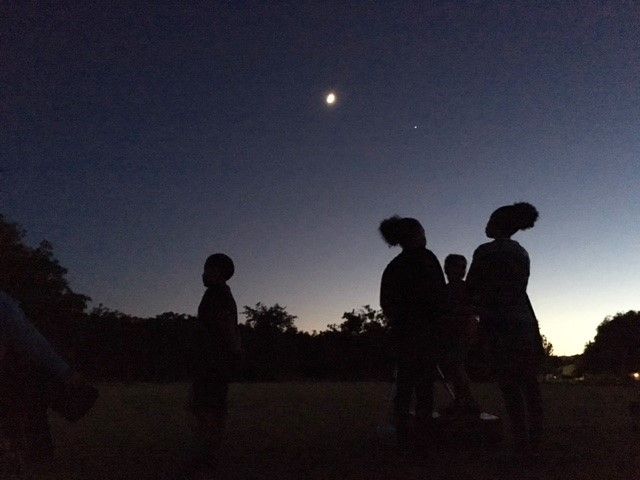Tuleyome's Science Corner: Stargazing

When I was little, looking up at the stars was a traditional pass time in my family. At my grandma’s house, when the summer heat had finally worn off and the sky was good and dark, we would sit outside and listen to stories about the constellations. My grandma would even encourage me to find my own patterns in the starry sky and create my own stories which I would tell her with great gusto. As we sat together each night, my grandma would point out various stars, planets, and constellations and we would laugh and talk long into the night while the bats swooped down overhead.
I have fond memories of starry summer nights with my grandma and much of my love for astronomy grew out of those nights. But it’s fall that has become my favorite star gazing period of the year. Starting in late August and Early September, the planets Jupiter and Saturn become visible in our night sky after sunset. These large gas giants shine bright with the reflection of the sun and become some of the largest, brightest objects in our night sky. As fall continues, Mars comes into view, along with Uranus, and sometimes, as we slip from October to November, there’s even a chance of spotting Venus and Neptune.
We are very blessed, living in our region, that we have the opportunity to see so many objects in the night sky, including many of our solar system’s planets. Even with the naked eye, these planets are easily recognizable by their size, brightness, and lack of sparkle. (Because they are simply reflecting the light of the sun, they don’t shimmer the way stars do, which are undergoing a process of nuclear fusion.) And while I love backyard stargazing anytime, nothing is more breathtaking than the view you get in more remote locations.
According to the Bureau of Land Management, public lands offer a fantastic opportunity for stargazing. Their distance from cities and bright lights gives the night sky a chance to really showcase all it’s amazing sights. (You can check out BLM’s flicker site here which features views from within the Berryessa Snow Mountain National Monument). If you are looking for a place to camp within the monument with dark skies, check out Cowboy Camp. Or want to try out something like a sunrise hike, our trail guide is a great resource to check out here.
I’d also highly recommend downloading a star gazing app to your smart phone or device. While these might not help in more remote areas, they are great for backyard star gazing, especially with kids. The apps work like star maps and help you locate and decipher all the objects in the sky. I like Sky Map, which is available for android devices. Night Sky is another app that works well with iOS devices. Whether in your backyard or somewhere in the Berryessa Snow Mountain National Monument, I hope you find time this fall to peer up into the sky and enjoy the beauty our region’s nighttime sky has to offer.
-Kara Green (kgreen@tuleyome.org)
Education Associate
RECENT ARTICLES






